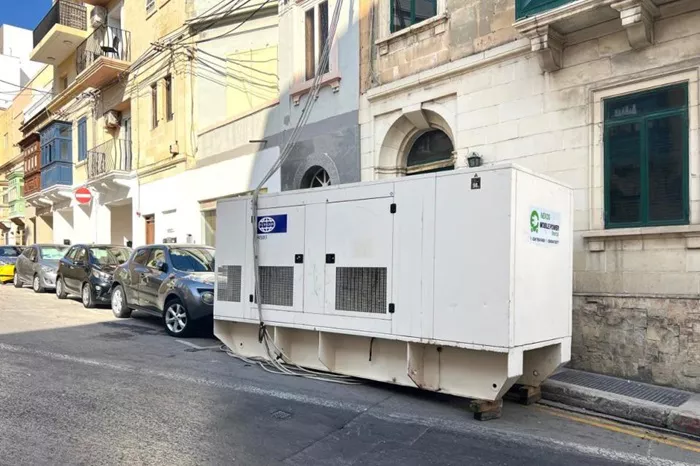Honeycomb Services Ltd has been confirmed as the exclusive supplier of diesel-powered generators for Enemalta, ensuring that households remain powered during unexpected outages. The selection was made through a negotiated procedure, according to Enemalta’s executive chair, Ray Fava.
Fava explained to Times of Malta that the contract with Honeycomb Services Ltd involves costs of up to €4,700 per day, but only if all ten generators are operated simultaneously for a full 24 hours. He clarified that the expenses are considerably lower than some reports suggested, dismissing claims that the generator lease could exceed €10,000 an hour.
“We issued several negotiated procedures, but Honeycomb Services was the only company capable of delivering the necessary service,” Fava stated. He emphasized that the highest cost would occur only under the most demanding conditions, where all generators are in continuous use.
Honeycomb Services Ltd, established in 1995 and registered at a Kalkara address under Jesmond Bondin—who is also linked to Nexos and the Malta Fairs and Conventions Centre—was the sole company capable of meeting Enemalta’s needs.
Fava detailed that the quoted daily cost includes not only the operation of the generators but also the expenses related to keeping them on standby, transporting them to required locations, and integrating them with substations.
During recent power cuts that affected up to 5,000 households, Enemalta relied on these generators to restore electricity. The power outages, which could take up to 16 hours to repair due to cable faults, left the corporation with no alternative but to deploy mobile generators.
“We couldn’t leave our clients without power for that long. Generators were our only viable solution to supply electricity to affected areas that couldn’t be reached through alternative underground routes,” Fava explained.
When asked why some areas continued to experience power cuts even after the generators were installed, Fava noted that the largest generators available, with a capacity of 1.2 MVA, might have been overloaded, causing substations to trip under the strain.
Related topics:
- 5 Best Diesel Generator For Home Use
- TOP 4 Reliable Home Generator On The Market
- 3 Best Dual Fuel Whole Home Generators

